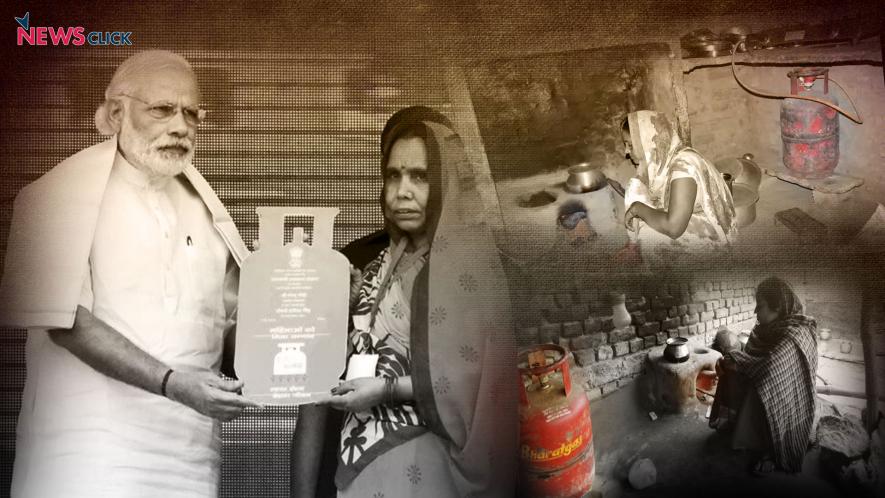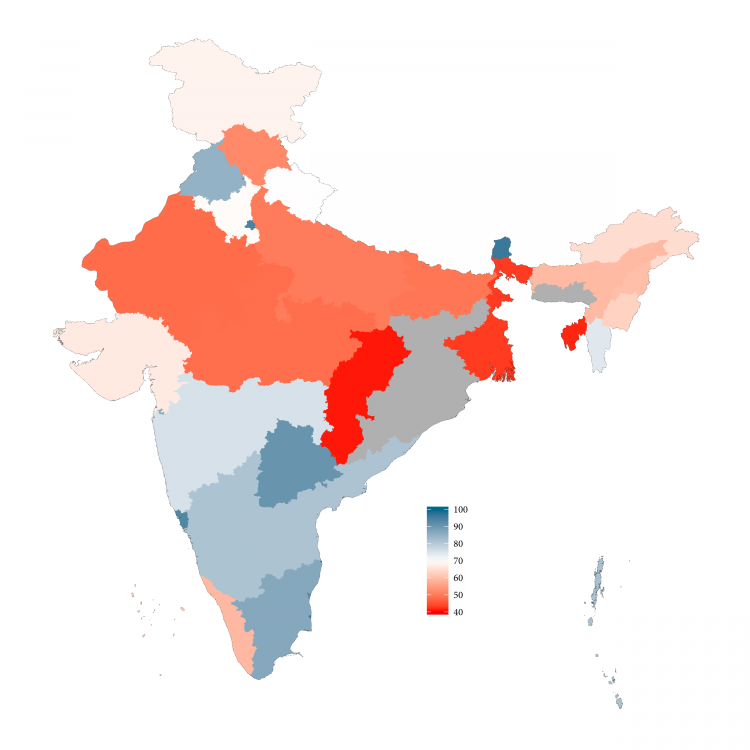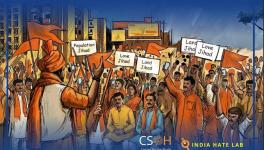Claims Vs Reality: Who Benefited from PM Ujjwala Yojana?

Pradhan Mantri Ujjwala Yojana (PMUY) is one of the flagship schemes of the Modi government. Launched on May 1, 2016, PMUY, through which subsidised LPG connections were claimed to have been provided to about 4.5 crore poor households until 2018, is widely believed to have brought major political dividends to NDA in the 2019 elections.
The recent data from the 76th round of National Sample Survey (NSS), however, contradicts claims made by the government about the extent to which benefits from PMUY have actually reached people.
The National Statistical Office (NSO) survey provides two pieces of information related to PMUY.
First, the nationally representative survey shows that 11.4% of all households got subsidised LPG connections through PMUY or other schemes. Of these, bulk of the connections (10%) were provided through PMUY. If one uses the estimate of number of households in India (projected from Census data), this amounts to about 3.17 crore households getting subsidised LPG connections between 2016 and 2018.
In contrast, data from the Ministry of Petroleum and Natural Gas (Table 1) shows that between 2016 and 2018, 5.2 crore connections were provided under subsidised schemes including 4.48 crore connections provided under PMUY.
Clearly, there is a gap of about 2 crore in the number of subsidised LPG connections that were provided between 2016 and 2018 that are not accounted for. This points to the possibility of a substantial leakage in the implementation of PMUY.
| Table 1. Official claims of coverage of subsidised provision of LPG connections | |
|---|---|
| No. of households in India as on 01.07.2018 (projections based on Census data) | 27,82,39,000 |
| No. of households covered under state govt. sponsored scheme | 38,67,198 |
| No. of households covered under CSR funds of PSU oil companies | 32,24,158 |
| No. of households covered under PMUY scheme | 4,48,64,318 |
| Total No. of households covered under any scheme | 5,19,55,674 |
Source: Ministry of Petroleum and Natural Gas
Another important statistic provided in the NSS survey is that, in 2018, only about 61.4% of Indian households used LPG for cooking (Table 2). In rural India, less than half (48.3%) households used LPG as their primary fuel for cooking. These estimates are much lower than the claims that have been made by the government.
The Petroleum Planning and Analysis Cell of the Ministry of Petroleum and Natural Gas regularly publishes data on LPG marketing on the basis of information provided by three PSU oil marketing companies (IOCL, BPCL and HPCL). According to its report on LPG Profile (Data on LPG Marketing) dated 01 July, 2018, 84.3% of all households were estimated to be using domestic connections of LPG from these companies.
| Table 2: Percentage distribution of households with different type of fuel used for cooking | |||
|---|---|---|---|
| Type of Fuel | Rural | Urban | Total |
| Firewood, chips and crop residue | 44.5 | 5.6 | 31.2 |
| LPG | 48.3 | 86.6 | 61.4 |
| Dung Cake | 5.5 | 0.5 | 3.8 |
| Others | 1.1 | 3.2 | 1.8 |
| No cooking arrangement (do not cook) | 0.6 | 4.1 | 1.8 |
| All | 100 | 100 | 100 |
Source: NSO, MoSPI
It may be noted that the gap between estimates of the ministry and the estimate of use of LPG from the survey is understated because NSS survey counts all users of LPG. This includes not only users of authorised domestic connections but also users who obtain gas cylinders in the black market or use privately-filled gas cylinders. Use of such gas cylinders is widespread among urban poor, in particular, among migrant workers, who are unable to get authorised connections because of their temporary residence status.
Further, the coverage statistics based on connections are likely to be overstated because of multiple connections that some households may have. As seen in the data, a significant amount of error of this kind is on account of leakages in connections provided under PMUY.
More importantly, however, the large gap between coverage in terms of connections and coverage in terms of actual use of LPG is on account of the fact that a substantial number of households are unable to afford LPG. That is, of the households that do have some kind of LPG connection, a fairly substantial number do not use it because of high cost of LPG in comparison with firewood, chips, crop residue and dung cakes. In 2018, the survey shows, firewood, chips, crop residue and dung cakes were the main source of fuel for half of rural households and 35% of all households (Table 2).
At the state level, a comparison between the two data-sets shows considerable difference between the estimated coverage of LPG and the use of LPG by the households, with the difference being as large as around 40 percentage points in the states of Himachal Pradesh, Punjab, Goa, Haryana and Rajasthan.
The NSO survey also shows that there is a wide variation in the use of LPG across the States (Figure 1). The reported use of LPG was lowest in Odisha (33%), Jharkhand (33%) and Meghalaya (35%). On the other hand, Puducherry (97%), Sikkim (96%), Goa (94%) and Delhi (94%) reported the highest proportion of households that use LPG for cooking. Among large states, Telangana (90.7%), Tamil Nadu (87%), Karnataka (81%) and Andhra Pradesh (81%) also had high proportion of households using LPG.
Figure 1. Proportion of households that use LPG as primary fuel for cooking

It may be noted that the large gap between proportion of households that have LPG connections and proportion of households that use LPG is also seen in administrative data on PMUY. The data show that in 2018, on an average, only 1.6 cylinders were refilled per connection provided under PMUY for the whole year. This average rate of refilling cylinders by beneficiaries of PMUY remained more or less unchanged between 2016 and 2018.
To sum up, a comparison of statistics from the recently released NSS data with the administrative data on LPG connections shows that a substantial number of LPG connections provided under the PMUY may not have reached intended beneficiaries. Administrative data show that beneficiaries of PMUY hardly use LPG gas and the extent to which they refill the cylinders is abysmally low. The survey data also confirms that the extent to which LPG is actually used as domestic fuel remains low particularly in rural areas. More than half of the rural households continue to use firewood, chips, crop residue and dung cakes as the main fuel.
Implementation of the PM Ujjwala Yojana has been widely noted as an important contributor to BJP’s victory in 2019 parliamentary elections. While this may have been true, there is a vast gap between the claims of benefits from the scheme and its actual reach among its intended beneficiaries.
Dechen Dolma is a research fellow, Society for Social and Economic Research, New Delhi. She can be reached at [email protected]
Also read: Elections 2019: The Truth Behind Modi Govt’s Pet Schemes -- I
Get the latest reports & analysis with people's perspective on Protests, movements & deep analytical videos, discussions of the current affairs in your Telegram app. Subscribe to NewsClick's Telegram channel & get Real-Time updates on stories, as they get published on our website.
























